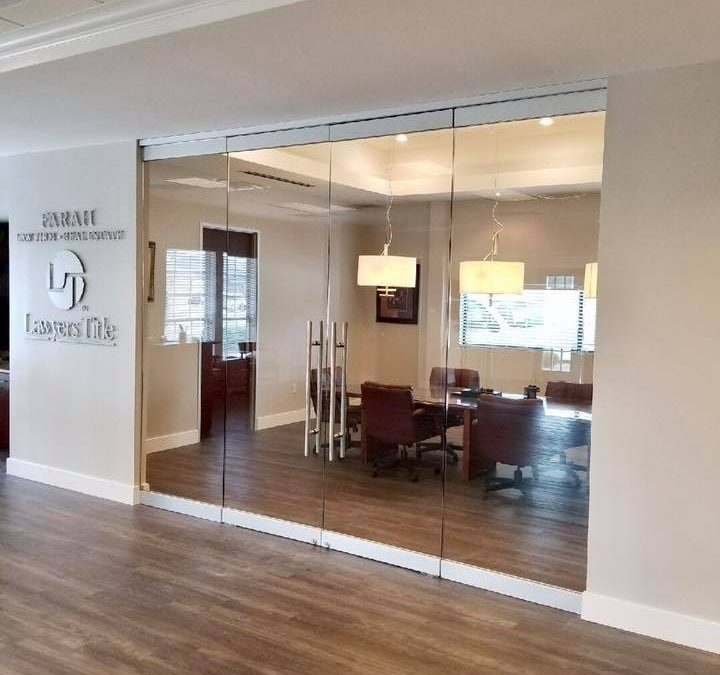Glass has always been an integral part of architecture, serving as both a functional and aesthetic element. Over the centuries, the use of glass has evolved from simple window panes to expansive panoramas that define modern architectural marvels. The future of glass in architecture promises to be even more transformative, driven by technological advancements and a growing emphasis on sustainability and innovation. This article explores the emerging trends and future possibilities of glass in modern architecture.
Expansive Panoramas and Seamless Integration
One of the most striking trends in contemporary architecture is the use of large, uninterrupted glass surfaces that create seamless connections between indoor and outdoor spaces. Advances in glass manufacturing and structural engineering have made it possible to produce massive glass panes that provide breathtaking panoramic views and flood interiors with natural light. This trend is epitomized by buildings like the Apple Park in Cupertino and the Louvre Pyramid in Paris, where vast glass surfaces enhance the sense of openness and transparency.
The future will likely see even larger and more seamless glass installations. Innovations in glass bonding and framing techniques are reducing the need for visible supports, allowing architects to create structures with minimal visual obstructions. This will enable more fluid transitions between spaces, blurring the boundaries between inside and outside, and fostering a deeper connection with the natural environment.
Smart Glass and Dynamic Facades
Smart glass technology is set to revolutionize the way we interact with our built environment. Electrochromic, thermochromic, and photochromic glass can change their properties in response to electrical signals, temperature, or light levels, respectively. These dynamic glazing solutions offer unparalleled control over light, heat, and privacy, adapting to changing environmental conditions in real-time.
Future buildings will likely incorporate smart glass extensively, transforming static facades into dynamic, responsive surfaces. This will enhance energy efficiency by reducing the need for artificial lighting and climate control systems, and improve occupant comfort by optimizing natural light and temperature. Additionally, smart glass can be integrated with building management systems to automate these adjustments, further enhancing sustainability and user experience.
Energy-Generating Glass
The push towards sustainable architecture has spurred the development of energy-generating glass. Photovoltaic glass, embedded with solar cells, can convert sunlight into electricity while still functioning as a transparent building material. This innovation is paving the way for self-sustaining buildings that generate their own energy, reducing reliance on external power sources and minimizing carbon footprints.
In the future, we can expect to see entire building facades covered in photovoltaic glass, transforming skyscrapers into vertical power plants. This integration of renewable energy sources with architectural design will be a critical step towards achieving net-zero energy buildings and addressing the global energy crisis.
Enhanced Performance and Safety
Advancements in glass technology are also enhancing its performance and safety. Laminated and tempered glass are becoming standard in modern architecture due to their superior strength and safety characteristics. Future innovations may include even more resilient materials, such as hybrid glass composites that combine the best properties of glass with other materials like carbon fiber or polymers.
Additionally, the development of self-cleaning glass, which uses photocatalytic and hydrophobic coatings to break down organic dirt and repel water, will reduce maintenance costs and improve the longevity and appearance of glass facades. This technology is particularly beneficial for high-rise buildings and structures in urban environments where cleaning access is challenging.
Aesthetic and Functional Versatility
The aesthetic potential of glass continues to expand with new treatments and manufacturing techniques. Digital printing on glass allows for high-resolution images and patterns to be applied, offering endless possibilities for customization and artistic expression. Colored, frosted, and textured glass can add depth and character to building facades and interiors, creating unique visual experiences.
Functionally, glass is being used in innovative ways beyond traditional windows and walls. Structural glass, capable of bearing loads, is being employed in floors, stairs, and even entire building envelopes. This versatility opens up new design possibilities, enabling architects to experiment with forms and spaces that were previously unattainable.
Conclusion
The future of glass in modern architecture is incredibly promising, characterized by larger, more seamless installations, dynamic and energy-efficient properties, enhanced safety and performance, and unprecedented aesthetic versatility. As technology continues to advance, glass will play an even more integral role in shaping the built environment, pushing the boundaries of what is possible in architectural design. From panes to panoramas, the evolution of glass is set to redefine our interaction with space, light, and nature, creating buildings that are not only visually stunning but also sustainable and responsive to our needs.

